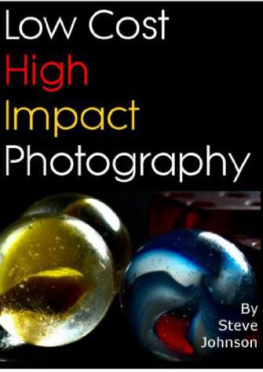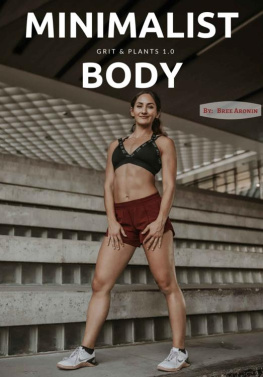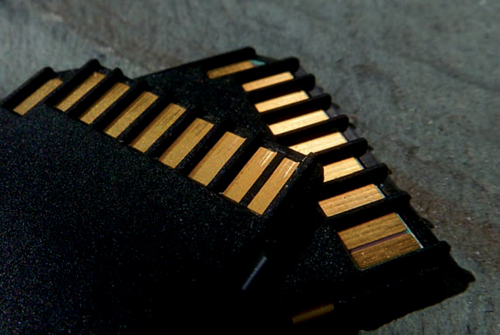The Minimalist Photographer
The Minimalist
Photographer
Steve Johnson

Steve Johnson, minimalistphotography101.com
Editor: Joan Dixon
Copyeditor: Jeanne Hansen
Layout: Petra Strauch
Cover Design: Helmut Kraus, www.exclam.de
Printer: Friesens Corporation
Printed in Canada
ISBN 978-1-937538-09-5
1st Edition 2013 2013
Steve Johnson
Rocky Nook, Inc.
802 E. Cota Street, 3rd Floor
Santa Barbara, CA 93103
www.rockynook.com
Library of Congress Cataloging-in-Publication Data
Johnson, Steve, 1960 June 14
The minimalist photographer / by Steve Johnson. -- 1st edition.
pages cm
ISBN 978-1-937538-09-5 (softcover : alk. paper)
1. Photography. I. Title.
TR146.J5725 2013
770--dc23
2012036210
Distributed by OReilly Media
1005 Gravenstein Highway North
Sebastopol, CA 95472
All rights reserved. No part of the material protected by this copyright notice may be reproduced or utilized in any form, electronic or mechanical, including photocopying, recording, or by any information storage and retrieval system, without written permission of the publisher.
Many of the designations in this book used by manufacturers and sellers to distinguish their products are claimed as trademarks of their respective companies. Where those designations appear in this book, and Rocky Nook was aware of a trademark claim, the designations have been printed in caps or initial caps. All product names and services identified throughout this book are used in editorial fashion only and for the benefit of such companies with no intention of infringement of the trademark. They are not intended to convey endorsement or other affiliation with this book. Adobe Photoshop and Adobe Lightroom are registered trademarks of Adobe Systems, Inc. in the United States and other countries.
While reasonable care has been exercised in the preparation of this book, the publisher and author(s) assume no responsibility for errors or omissions, or for damages resulting from the use of the information contained herein or from the use of the discs or programs that may accompany it.
All images Steve Johnson
This book is printed on acid-free paper.
For Meg
She was right.
Introduction
A short while after I first became interested in photography I came up against a problem that almost made me put my camera away forever. I have come to realize through countless discussions with many others that I am far from unique in having this problem and that it is very common among those who took or want to take photography seriously. The problem can be summed up in two words: What now? Although I knew that I wanted to make images, and the camera seemed like the ideal tool, I could not generate any real enthusiasm.
To find photographic fulfillment, I bought camera equipment and photography magazines, read technical discussions by famous photographers, and attended every photography exhibition within a fifty-mile radius of wherever I was at the time. This did little more than fill up my camera bag and bookshelf and deplete my wallet. None of this advanced my photography in any meaningful way.
After becoming competent with a new lens or learning a new technique, I always found myself returning to the question, What now? I gradually came to realize that the answer did not lie in acquiring more equipment or knowledge but rather in rethinking my relationship with photography. To cut a long story short, I realized that I needed to bring a philosophy to my photography rather than approach it as a blank slate.
This is where minimalism comes in. There are many definitions of minimalism, all revolving around the idea of simplification and how best to achieve it. This is true whether the subject being discussed is fine art, lifestyle, or just about anything else. All these have one thing in common, though, and that is that the process is not random, or simply a matter of getting rid of a certain percentage of something and hoping for a worthwhile result. The objective is always to remove the non-essential in order to get to what is essential.
It is easy to see how a minimalist philosophy can be applied to an area such as composition as it dovetails perfectly with the idea that visual clutter should always be reduced as far as possible. Less obvious areas where a minimalist approach would serve the photographer well are equipment choices, an understanding of the history of photography, and even the possible future of photography. I do not think that there is any aspect of photography or the development of the photographer that does not benefit from this reductionist approach.
The upshot of this approach is that, for me, What now? has been replaced by a different question, What next? I now have a half dozen photography projects that I am enthusiastically tackling at any given time. The realization that I had to bring a philosophy and a belief system to photography, and that the best philosophy was minimalism, underpins this book, and it is that idea I am excited to be able to share with you.
At the end of each chapter you will find a small gallery of images. Each gallery is based on a theme that is intended to teach, to inspire, and, last but not least, to simply be enjoyed.
Chapter 1
You
The more you know about yourself as a photographeryour preferences, your motivations, and your goalsthe better your photography will be. Here we will take a look at these issues so that you can see the importance of defining them for yourself.
So You Want to Take Better Photographs
By far, the most profound change that occurred over the past 20 years was the shift from film to digital. The appearance of the first consumer-level digital cameras in the mid-1990s really did change everything. Producing photographs went from being an expensive pastime to something that was basically free after the initial equipment was purchased. The cost of early digital cameras was very high, and the image quality was low when compared with film cameras, but this is no longer the case.
Memory cards
I now take for granted that I can take 50 or 500 shots of a subject, whereas with film I may have limited myself two or three at most. The extra cost is nothing more than a miniscule amount of depreciation on the camera and on the rechargeable batterya couple of cents against tens or even hundreds of dollars. This reduced cost of digital photography has made it much easier to experiment with the medium and has allowed many people to produce images who could not have afforded to do so with film. Another big technological advance is the modern-day ability to instantly see the result of a shot on the cameras LCD screen, rather than having to wait for it to be returned from the photo lab. Adjustments to an exposure, and other on-the-spot modifications based on viewing the original, can now be implemented without an intervening period of days or weeks.
Since the cost of producing a perfectly serviceable photograph is only a fraction of what it used to be, and experimentation is now within reach of just about everyone, there are a lot of people taking photographs who otherwise would not have been. This includes, among other loosely defined groups, thousands of people taking photographs of their daily lives as well as visual artists who can now afford to use a camera for something other than simply recording the work they produced in other mediums. For the first time, photography has become a serious medium for those whose background is not primarily photography.
Next page















